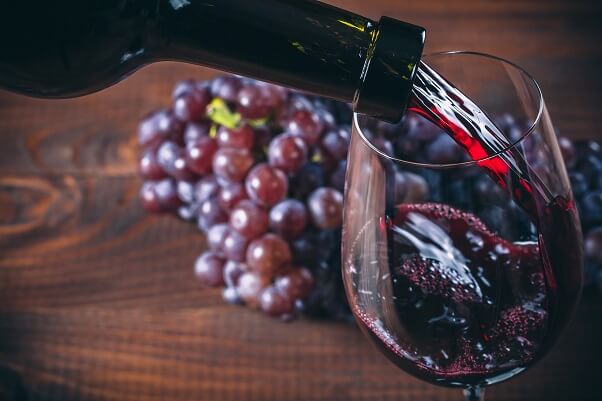
Kicking back in your recliner with a lovely glass of Chardonnay? Enjoying some BYOB wine you purchased online at a favorite local bistro?
Whether at home or on the go, you should always stay aware of the alcohol content of the wine you drink. In fact, as you become more appreciative of the wonderful world of wine, you will begin to pay more attention to each bottle’s alcohol content. After all, without alcohol, you would basically be sipping a sophisticated glass of grape juice without much structure or body.
To help you get a handle on the alcohol content of your preferred wines, we have developed a quick primer on what alcohol content is, how to gauge it and why it matters.
What Is the Average Alcohol Content in Wine?
The alcohol content in any wine is advertised as ABV, which stands for “alcohol by volume.” ABV is designated by a percentage, indicating how much alcohol is present out of 100%.
Most wines fall somewhere between about 6-16% ABV, which is a broad range considering that many bottles of beer are around 4-5%, sake hovers around 20% and some whiskeys can hit 50% or more.
What Affects ABV in Wine?
The alcohol content in both red and white wine varietals depends on a few factors. The first is, not surprisingly, the maturity of the grapes.
Grapes that are allowed to ripen on the vine for long periods tend to have more sugars. By the time they are picked, their high sugar content allows them to be converted into wines with higher levels of alcohol content.
The fermentation process also plays a role in a wine’s final ABV rating. The longer wines ferment and the more sugars the grapes naturally contain, the higher the percentage of ABV. Sugar will continue to convert to alcohol until the winemaker decides the wine has reached its peak.
Finally, climate comes into the picture. Wines from warmer parts of the world often rate higher for average alcohol content, regardless of whether they are reds, whites or rosés. You will likely find that a bottle of wine from sunny Australia might contain more alcohol per volume than a comparable wine created from grapes hailing from cooler northern Germany soil.
Can You Judge the Alcohol Content of Wine by Taste?
Many people who become familiar with wines get to a point where they can taste how much alcohol is in a glass. Alcohol produces a sense of heat and intensity on the palate. As a result, a red wine that feels hot in the back of the throat probably has a higher ABV than a white wine that leaves no lingering hotness in the mouth.
As you become more acquainted with wine types, you may notice that the harmony of a wine with higher ABV balances differently than a wine with lower ABV. Take the time to sniff and sip your wines, and you will begin to get better at estimating a wine’s likely ABV.
One note of caution: winemakers are allowed a range of about 1.5% difference between a wine’s advertised and true ABV. If you really want a wine that falls under 12%, for instance, be sure to get one that promotes its ABV as 10.5% to be on the safe side.
Shop Varietals of Wine to Try in Each ABV Category
Want a fast way to figure out what type of wine to drink based on alcohol content? Low ABV wines of less than 12.5% ABV include most German Rieslings, a few rosés and all sparkling wines.
Moving up to around 13% ABV are Pinot Grigio and Chianti varietals from Italy, as well as Rieslings from New York. If you want to bump your ABV to closer to 14%, choose warm-region Merlots, California Sauvignon Blanc or Chilean Chardonnay.
Of course, if full-bodied taste regardless of a high ABV is what you seek, head to intense, sweet, fruity or bold Italian Amarone, sherry from Spain or California Zinfandel.
Make sure that you pair your wine correctly by taking our Wine Pairing Quiz.
Looking for the ideal bottle to stock your wine collection or give to a friend, neighbor, coworker or client over 21 years old? Visit Marketview Liquor for our selection of wines from around the globe.
